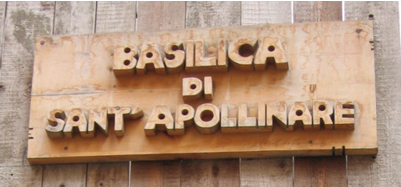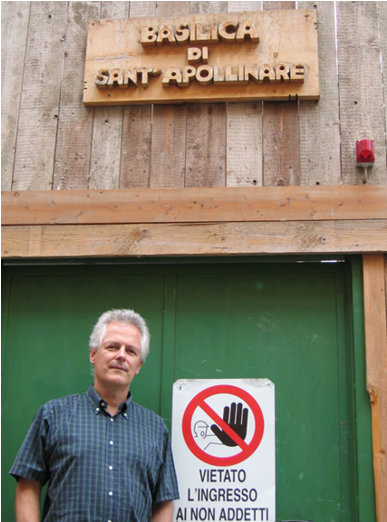The mystery of Sant'Apollinare
by Philip Willan

The 18th century church of Sant’Apollinare is a stone’s throw from Rome’s central Piazza Navona and is said to have been built over a temple to the sun-god Apollo. In recent times it has stood over an altogether more troubling object: the tomb of a murdered Roman crime boss.
Ernesto “Renatino” De Pedis was shot dead on February 2 1990 as he rode his scooter the wrong way down the one-way Via del Pellegrino, a narrow street full of shops selling antiques and books that leads into another central square, Campo dei Fiori. The presence of his body in the church crypt was a singular honour for the murdered Magliana Band boss, whose fortune was built on loan-sharking and illegal gambling, with a little help from contacts in the secret services.
The tomb is an impressive white marble affair with the name “Renatino” picked out in gold and sapphires on the side. A photo of its occupant rests atop it, flanked by a small terracotta angel. It illustrates a strange commingling of the sacred and profane that was one of the hallmarks of the Calvi case, while violating canon law, which specifies that only popes, cardinals and bishops should be buried in church.
The honour was accorded the murdered criminal by Cardinal Ugo Poletti, the head of the Rome diocese, on the recommendation of Monsignor Piero Vergari, who celebrated the funeral. De Pedis had been “a great benefactor of the poor who frequent the basilica and has given concrete assistance to many charitable initiatives,” Vergari wrote to Poletti on March 6 1990. “He gave particular aid to the young, concerning himself especially with their Christian and human education.” A strange role model indeed!
It is possible De Pedis performed altogether more delicate activities for the benefit of the Vatican than the financing of Sant’Apollinare’s charitable work. By coincidence, a 16-year-old girl disappeared without trace after attending a flute lesson at a Vatican-owned music school adjoining the church on June 22 1983. The kidnap of Emanuela Orlandi, the daughter of a Vatican messenger, was apparently used by a terrorist group in a failed bid to obtain the release from prison of Mehmet Ali Agca, the Turk who had shot Pope John Paul II two years earlier. The physical resemblance between De Pedis and the photofit image of the last person seen talking to Orlandi on the evening of her disappearance has been remarked upon, and several witnesses have suggested a connection between the Magliana Band boss and the girl’s kidnap.
Former Prime Minister Giulio Andreotti commented on the case in an interview published in the Corriere della Sera (September 24 2005). He recalled the bureaucratic difficulties in obtaining permission for the burial of his illustrious predecessor Alcide De Gasperi in the porch of the church of San Lorenzo fuori le Mura and speculated on the health certificates that would normally have been required for the removal of De Pedis’ corpse from its original resting place in the Verano cemetery to its final berth in Sant’Apollinare’s crypt. “Perhaps De Pedis, having been assassinated, presented less risk of infection,” he observed, with typical dry humour.
The Catholic Church’s post mortem honouring of De Pedis contrasts starkly with its treatment of Piergiorgio Welby, a paralysed sufferer from muscular dystrophy who campaigned for the right to be detached from the artificial respirator that had kept him alive for his last nine years. Welby achieved his desire in December 2006. He was denied a Catholic funeral, requested by his relatives, as the church considered his death an assisted suicide.